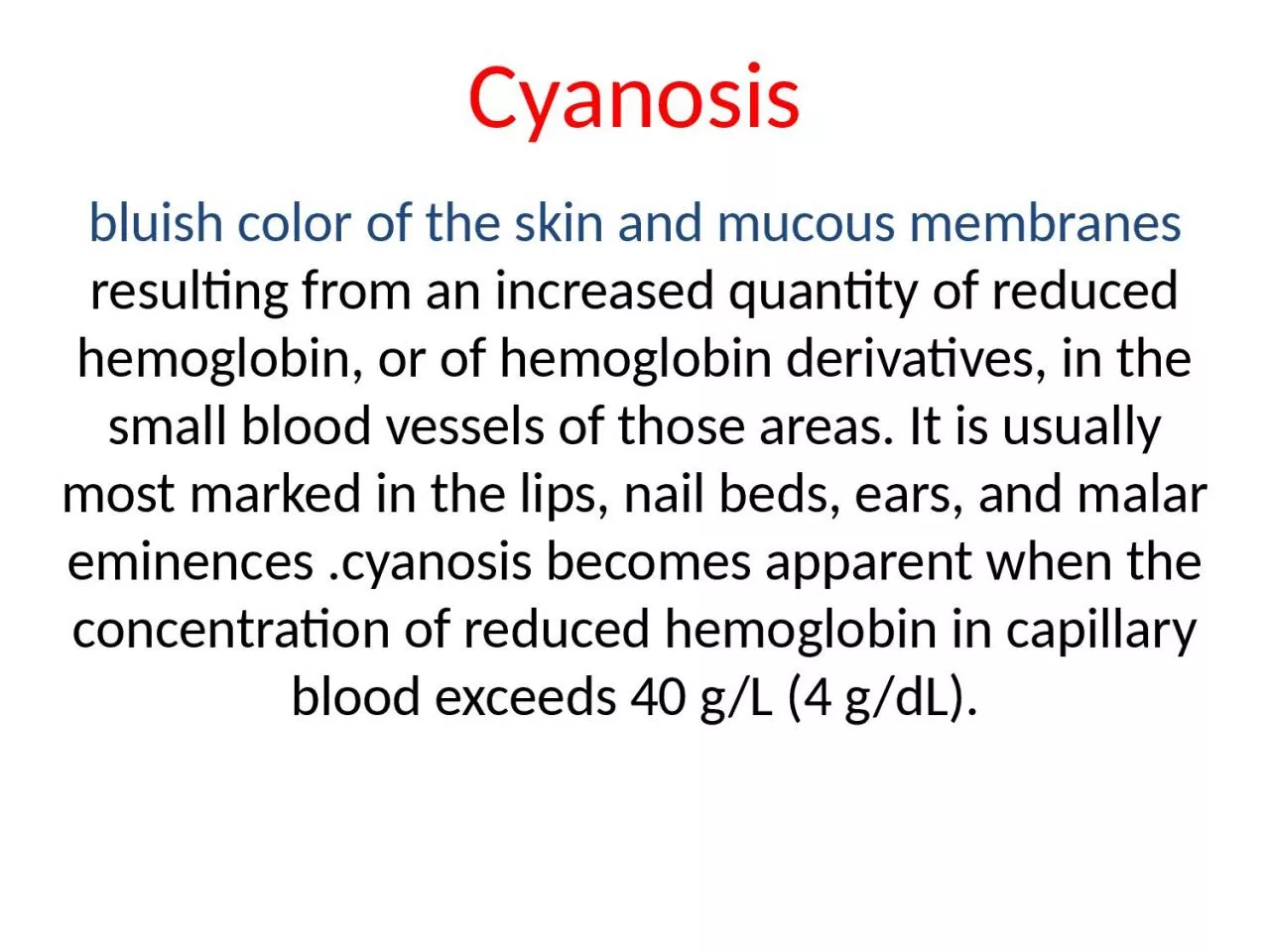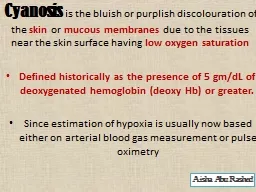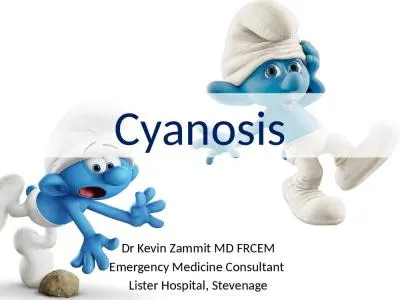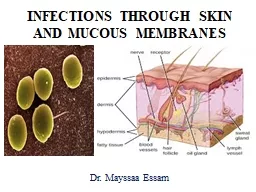PPT-Cyanosis bluish color of the skin and mucous membranes
Author : brianna | Published Date : 2023-05-20
resulting from an increased quantity of reduced hemoglobin or of hemoglobin derivatives in the small blood vessels of those areas It is usually most marked in the
Presentation Embed Code
Download Presentation
Download Presentation The PPT/PDF document "Cyanosis bluish color of the skin and mu..." is the property of its rightful owner. Permission is granted to download and print the materials on this website for personal, non-commercial use only, and to display it on your personal computer provided you do not modify the materials and that you retain all copyright notices contained in the materials. By downloading content from our website, you accept the terms of this agreement.
Cyanosis bluish color of the skin and mucous membranes: Transcript
Download Rules Of Document
"Cyanosis bluish color of the skin and mucous membranes"The content belongs to its owner. You may download and print it for personal use, without modification, and keep all copyright notices. By downloading, you agree to these terms.
Related Documents














